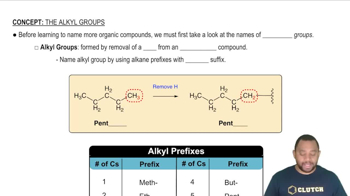In the course of various qualitative analysis procedures, the following mixtures are encountered: (a) Zn2+ and Cd2+. (b) Cr(OH)3 and Fe(OH)3 Suggest how each mixture might be separated.

(b) What is the most significant difference between the sulfides precipitated in group 2 and those precipitated in group 3?

 Verified step by step guidance
Verified step by step guidance
Verified video answer for a similar problem:
Key Concepts
Selective Precipitation

Group 2 vs. Group 3 Sulfides

Precipitation Reagents

In the course of various qualitative analysis procedures, the following mixtures are encountered: (c) Mg2+ and K+ (d) Ag+ and Mn2+. Suggest how each mixture might be separated.
Suggest how the cations in each of the following solution mixtures can be separated: (c) Pb2 + and Al3 +.
Derive an equation similar to the Henderson–Hasselbalch equation relating the pOH of a buffer to the pKb of its base component.
Rainwater is acidic because CO21g2 dissolves in the water, creating carbonic acid, H2CO3. If the rainwater is too acidic, it will react with limestone and seashells (which are principally made of calcium carbonate, CaCO3). Calculate the concentrations of carbonic acid, bicarbonate ion 1HCO3-2 and carbonate ion 1CO32 - 2 that are in a raindrop that has a pH of 5.60, assuming that the sum of all three species in the raindrop is 1.0 * 10-5 M.
